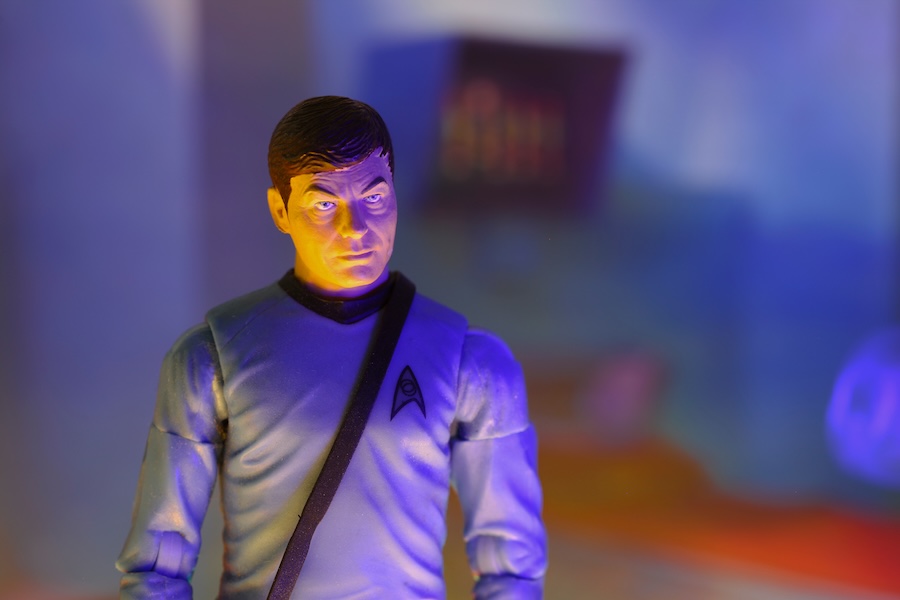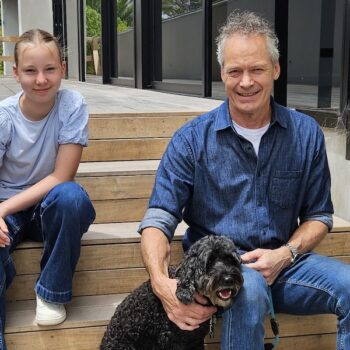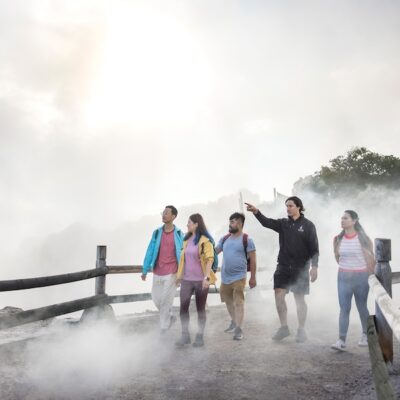It’s worse than that, traditional business education is dead, Jim
Pictured above: Star Trek’s Doctor Leonard “Bones” McCoy.
In a candid and witty reflection, business lecturer Dr Steve Scott questions the future of traditional business education. From counting sheep to curating YouTube playlists, he makes the case for a shift from content delivery to context creation in a world where knowledge is just a click away.
I ‘teach’ at a tertiary institution overlooking the ocean in a remote provincial town. Some days when I’m trapped in meetings, like this one, bored, I count the sheep grazing on the opposing grassy knoll. When I first started here, I was never able to get a definitive answer – the little white clouds would blow about randomly, killing my anxious need for numerical accuracy. Or I’d be interrupted by a chatty colleague, who was oblivious to my pursuit of this important mathematical certainty. But, as of today, I can confirm it is 22. Over the months, the sheep numbers have been falling on that diminutive hill. As have the number of domestic students enrolling in our courses. Instead, we rely on the reawakened interest of the post-pandemic international student, who happily pays eyewatering fees, to ensure we keep the lights on.
On this occasion my sheep counting is disturbed by the Compliance Officer, the newly minted plant from NZQA, asking me to provide her with a list of textbooks for the courses I’ll be teaching this semester. Page Numbers and Chapter Titles, she clips, etc., like she’s ordering a flat white and the very last of Lacan’s Cookies. And the readings, she adds, unexpectedly, as an addendum, as a bloody exclamation mark, that I’ll be distributing on a weekly basis like this is still a thing. I don’t use textbooks or readings, I tell her, automatically, without filtering, without looking away from the ever-shifting Charles Jones’ Sheepscape forming within the frame of the Arched Window.
There is a moment of silence. There is the humming of the projector. Synchronised breathing. The sheep start moving like the random beasts they are and I have to start counting all over again. My colleagues cross their eyes and sigh and try to refocus on slide 187 of the PowerPoint presentation that is being inflicted upon us about our obligation to keep the students engaged, focused, and happy – and not to put them to sleep with an endless tsunami of PowerPoint gibberish.
I link them instead, I say, filling the empty speech bubble, to YouTube videos and assorted online paraphernalia. I make nice little entertaining playlists. I find audiobooks. I find e-guides. I find webinars and podcasts that outline everything in entertaining, understandable, and digestible snack sized chunks. I find all the cool stuff and put it together so it makes sense. And then we discuss it. Add some critique. After all, let’s face it, I tell her, Traditional Business Education is Dead, Jim. Even though she’s not a Trekkie and won’t get the reference.
But, she asks, shining the laser pointer into my eyes accidentally on purpose, if they can simply find the answers on YouTube what’s the point of, well, you?
Well, I wonder, if I wasn’t here, who would keep an eye on those ever-moving sheep? They could build a bridge over that number-eight-wire fence or tunnel under it if I wasn’t vigilant. They could avoid being some future dinner if they could just get themselves organised. Unionised even. They could repurpose themselves as the providers of milk and cheese rather than chops and legs and miles upon miles of beige carpeting.
We’re no longer in the content delivery business, I tell her. We’re in the curating business. My job is to find, vet, order, and link various artefacts. I’m a knowledge filter. I’m providing a context from which, hopefully, some learning can take place. Mr Krabs, for example, can teach us how to run a successful small business (The Krusty Krab restaurant) with neurodivergent employees (SpongeBob SquarePants & Squidward Tentacles) within a highly competitive duopoly (Plankton’s technically advanced, yet less successful, The Chum Bucket), while Tony Soprano is excellent for explaining and building upon Michael Porter’s boring and, let’s face it, overly simplistic, five forces model (it’s just a circle with some arrows after all). He’s great for illustrating the complexities of decision making strategies involving not only external threats but also, and just as importantly, internal dangers.
Her head spins on her shoulders like the child in The Exorcist. Her eyes roll and blink and I guess she’s rebooting, by the dialup modem sounds chirping out of her cookie hole. My colleagues stare blankly at the slide on How to Ensure your Fonts are not Passive Aggressive and refuse to catch my eye. Apparently Comic Sans should be avoided with Zoomers unless you want a riot.
Twenty-three! I yell, in a eureka like moment, severing her dialup connection, uncrossing my colleagues’ eyes. I missed one. It’s been hiding in plain sight, slightly behind its doppelganger, partially obscured by a lone bush, on the very edge of my visual field, and is now emerging, fully formed, in all its majestic, cloud-like beauty.







